Fannie Mae 2011 Annual Report Download - page 9
Download and view the complete annual report
Please find page 9 of the 2011 Fannie Mae annual report below. You can navigate through the pages in the report by either clicking on the pages listed below, or by using the keyword search tool below to find specific information within the annual report.-
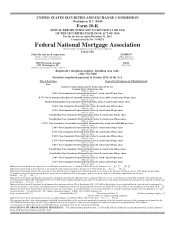 1
1 -
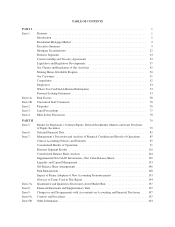 2
2 -
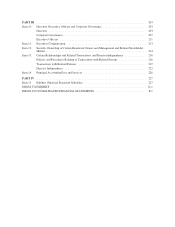 3
3 -
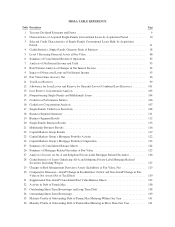 4
4 -
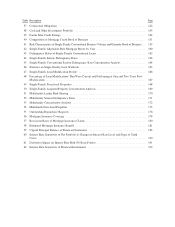 5
5 -
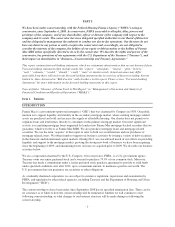 6
6 -
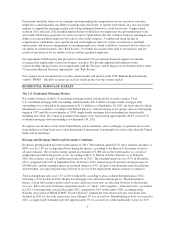 7
7 -
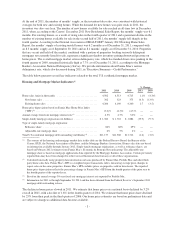 8
8 -
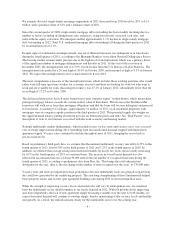 9
9 -
 10
10 -
 11
11 -
 12
12 -
 13
13 -
 14
14 -
 15
15 -
 16
16 -
 17
17 -
 18
18 -
 19
19 -
 20
20 -
 21
21 -
 22
22 -
 23
23 -
 24
24 -
 25
25 -
 26
26 -
 27
27 -
 28
28 -
 29
29 -
 30
30 -
 31
31 -
 32
32 -
 33
33 -
 34
34 -
 35
35 -
 36
36 -
 37
37 -
 38
38 -
 39
39 -
 40
40 -
 41
41 -
 42
42 -
 43
43 -
 44
44 -
 45
45 -
 46
46 -
 47
47 -
 48
48 -
 49
49 -
 50
50 -
 51
51 -
 52
52 -
 53
53 -
 54
54 -
 55
55 -
 56
56 -
 57
57 -
 58
58 -
 59
59 -
 60
60 -
 61
61 -
 62
62 -
 63
63 -
 64
64 -
 65
65 -
 66
66 -
 67
67 -
 68
68 -
 69
69 -
 70
70 -
 71
71 -
 72
72 -
 73
73 -
 74
74 -
 75
75 -
 76
76 -
 77
77 -
 78
78 -
 79
79 -
 80
80 -
 81
81 -
 82
82 -
 83
83 -
 84
84 -
 85
85 -
 86
86 -
 87
87 -
 88
88 -
 89
89 -
 90
90 -
 91
91 -
 92
92 -
 93
93 -
 94
94 -
 95
95 -
 96
96 -
 97
97 -
 98
98 -
 99
99 -
 100
100 -
 101
101 -
 102
102 -
 103
103 -
 104
104 -
 105
105 -
 106
106 -
 107
107 -
 108
108 -
 109
109 -
 110
110 -
 111
111 -
 112
112 -
 113
113 -
 114
114 -
 115
115 -
 116
116 -
 117
117 -
 118
118 -
 119
119 -
 120
120 -
 121
121 -
 122
122 -
 123
123 -
 124
124 -
 125
125 -
 126
126 -
 127
127 -
 128
128 -
 129
129 -
 130
130 -
 131
131 -
 132
132 -
 133
133 -
 134
134 -
 135
135 -
 136
136 -
 137
137 -
 138
138 -
 139
139 -
 140
140 -
 141
141 -
 142
142 -
 143
143 -
 144
144 -
 145
145 -
 146
146 -
 147
147 -
 148
148 -
 149
149 -
 150
150 -
 151
151 -
 152
152 -
 153
153 -
 154
154 -
 155
155 -
 156
156 -
 157
157 -
 158
158 -
 159
159 -
 160
160 -
 161
161 -
 162
162 -
 163
163 -
 164
164 -
 165
165 -
 166
166 -
 167
167 -
 168
168 -
 169
169 -
 170
170 -
 171
171 -
 172
172 -
 173
173 -
 174
174 -
 175
175 -
 176
176 -
 177
177 -
 178
178 -
 179
179 -
 180
180 -
 181
181 -
 182
182 -
 183
183 -
 184
184 -
 185
185 -
 186
186 -
 187
187 -
 188
188 -
 189
189 -
 190
190 -
 191
191 -
 192
192 -
 193
193 -
 194
194 -
 195
195 -
 196
196 -
 197
197 -
 198
198 -
 199
199 -
 200
200 -
 201
201 -
 202
202 -
 203
203 -
 204
204 -
 205
205 -
 206
206 -
 207
207 -
 208
208 -
 209
209 -
 210
210 -
 211
211 -
 212
212 -
 213
213 -
 214
214 -
 215
215 -
 216
216 -
 217
217 -
 218
218 -
 219
219 -
 220
220 -
 221
221 -
 222
222 -
 223
223 -
 224
224 -
 225
225 -
 226
226 -
 227
227 -
 228
228 -
 229
229 -
 230
230 -
 231
231 -
 232
232 -
 233
233 -
 234
234 -
 235
235 -
 236
236 -
 237
237 -
 238
238 -
 239
239 -
 240
240 -
 241
241 -
 242
242 -
 243
243 -
 244
244 -
 245
245 -
 246
246 -
 247
247 -
 248
248 -
 249
249 -
 250
250 -
 251
251 -
 252
252 -
 253
253 -
 254
254 -
 255
255 -
 256
256 -
 257
257 -
 258
258 -
 259
259 -
 260
260 -
 261
261 -
 262
262 -
 263
263 -
 264
264 -
 265
265 -
 266
266 -
 267
267 -
 268
268 -
 269
269 -
 270
270 -
 271
271 -
 272
272 -
 273
273 -
 274
274 -
 275
275 -
 276
276 -
 277
277 -
 278
278 -
 279
279 -
 280
280 -
 281
281 -
 282
282 -
 283
283 -
 284
284 -
 285
285 -
 286
286 -
 287
287 -
 288
288 -
 289
289 -
 290
290 -
 291
291 -
 292
292 -
 293
293 -
 294
294 -
 295
295 -
 296
296 -
 297
297 -
 298
298 -
 299
299 -
 300
300 -
 301
301 -
 302
302 -
 303
303 -
 304
304 -
 305
305 -
 306
306 -
 307
307 -
 308
308 -
 309
309 -
 310
310 -
 311
311 -
 312
312 -
 313
313 -
 314
314 -
 315
315 -
 316
316 -
 317
317 -
 318
318 -
 319
319 -
 320
320 -
 321
321 -
 322
322 -
 323
323 -
 324
324 -
 325
325 -
 326
326 -
 327
327 -
 328
328 -
 329
329 -
 330
330 -
 331
331 -
 332
332 -
 333
333 -
 334
334 -
 335
335 -
 336
336 -
 337
337 -
 338
338 -
 339
339 -
 340
340 -
 341
341 -
 342
342 -
 343
343 -
 344
344 -
 345
345 -
 346
346 -
 347
347 -
 348
348 -
 349
349 -
 350
350 -
 351
351 -
 352
352 -
 353
353 -
 354
354 -
 355
355 -
 356
356 -
 357
357 -
 358
358 -
 359
359 -
 360
360 -
 361
361 -
 362
362 -
 363
363 -
 364
364 -
 365
365 -
 366
366 -
 367
367 -
 368
368 -
 369
369 -
 370
370 -
 371
371 -
 372
372 -
 373
373 -
 374
374
 |
 |
We estimate that total single-family mortgage originations in 2011 decreased from 2010 levels by 20% to $1.4
trillion, with a purchase share of 34% and a refinance share of 66%.
Since the second quarter of 2008, single-family mortgage debt outstanding has been steadily declining due to a
number of factors including declining home sales and prices, rising foreclosures, increased cash sales, and
reduced home equity extraction. We anticipate another approximately 1.1% decline in single-family mortgage
debt outstanding in 2012. Total U.S. residential mortgage debt outstanding fell during the third quarter of 2011
by an annualized rate of 2.1%.
Despite signs of stabilization and improvement, one out of thirteen borrowers was delinquent or in foreclosure
during the fourth quarter of 2011, according to the Mortgage Bankers Association National Delinquency Survey.
The housing market remains under pressure due to the high level of unemployment, which was a primary driver
of the significant number of mortgage delinquencies and defaults in 2011. At the start of the recession in
December 2007, the unemployment rate was 5.0%, based on data from the U.S. Bureau of Labor Statistics. The
unemployment rate peaked at a 26-year high of 10.0% in October 2009, and remained as high as 8.3% in January
2012. We expect the unemployment rate to remain relatively flat in 2012.
The most comprehensive measure of the unemployment rate, which includes those working part-time who would
rather work full-time (part-time workers for economic reasons) and those not looking for work but who want to
work and are available for work (discouraged workers), was 15.1% in January 2012, substantially lower than the
record high of 17.2% in October 2009.
The decline in home prices has left many homeowners with “negative equity” in their homes, which means their
principal mortgage balance exceeds the current market value of their home. This increases the likelihood that
borrowers will walk away from their mortgage obligations and that the loans will become delinquent and proceed
to foreclosure. According to CoreLogic, approximately 11 million, or 22%, of all residential properties with
mortgages were in a negative equity position in the third quarter of 2011. This potential supply also weighs on
the supply/demand balance putting downward pressure on both home prices and rents. See “Risk Factors” for a
description of risks to our business associated with the weak economy and housing market.
National multifamily market fundamentals, which include factors such as rents and vacancy rates, saw a second
year of steady improvement during 2011, benefiting from increased rental demand coupled with limited new
apartment supply. Vacancy rates continued to decline throughout most of 2011, bringing the sector back to
pre-recession levels.
Based on preliminary third-party data, we estimate that the national multifamily vacancy rate fell to 6.25% in the
fourth quarter of 2011, from 6.50% in the third quarter of 2011 and 7.25% in the fourth quarter of 2010. In
addition, we estimate that average asking rents increased steadily for nearly two years, most recently increasing
by 0.5% in the fourth quarter of 2011 on a national basis. The increase in overall rental demand was also
reflected in an estimated increase of about 50,000 units in the net number of occupied rental units during the
fourth quarter of 2011, according to preliminary data from Reis, Inc. That brings the total estimated net
absorption for the year, (that is, the net change in the number of units occupied over the year), to 170,000 units.
Vacancy rates and rents are important to loan performance because multifamily loans are generally repaid from
the cash flows generated by the underlying property. The year-long strengthening of these fundamentals helped
boost property values and, in turn, spur apartment building sales during 2011 in most metropolitan areas.
While the strength of improving vacancy levels and rental rates will vary by metropolitan area, on a national
basis the multifamily sector should continue to see steady demand in 2012. With job growth slowly improving,
and, more importantly, the lack of new apartment supply becoming available over the next 12 to18 months, we
expect that rental demand will continue to outstrip supply, thereby maintaining stable vacancy levels and healthy
rent growth. As a result, the outlook remains steady for the multifamily sector over the coming year.
-4-
